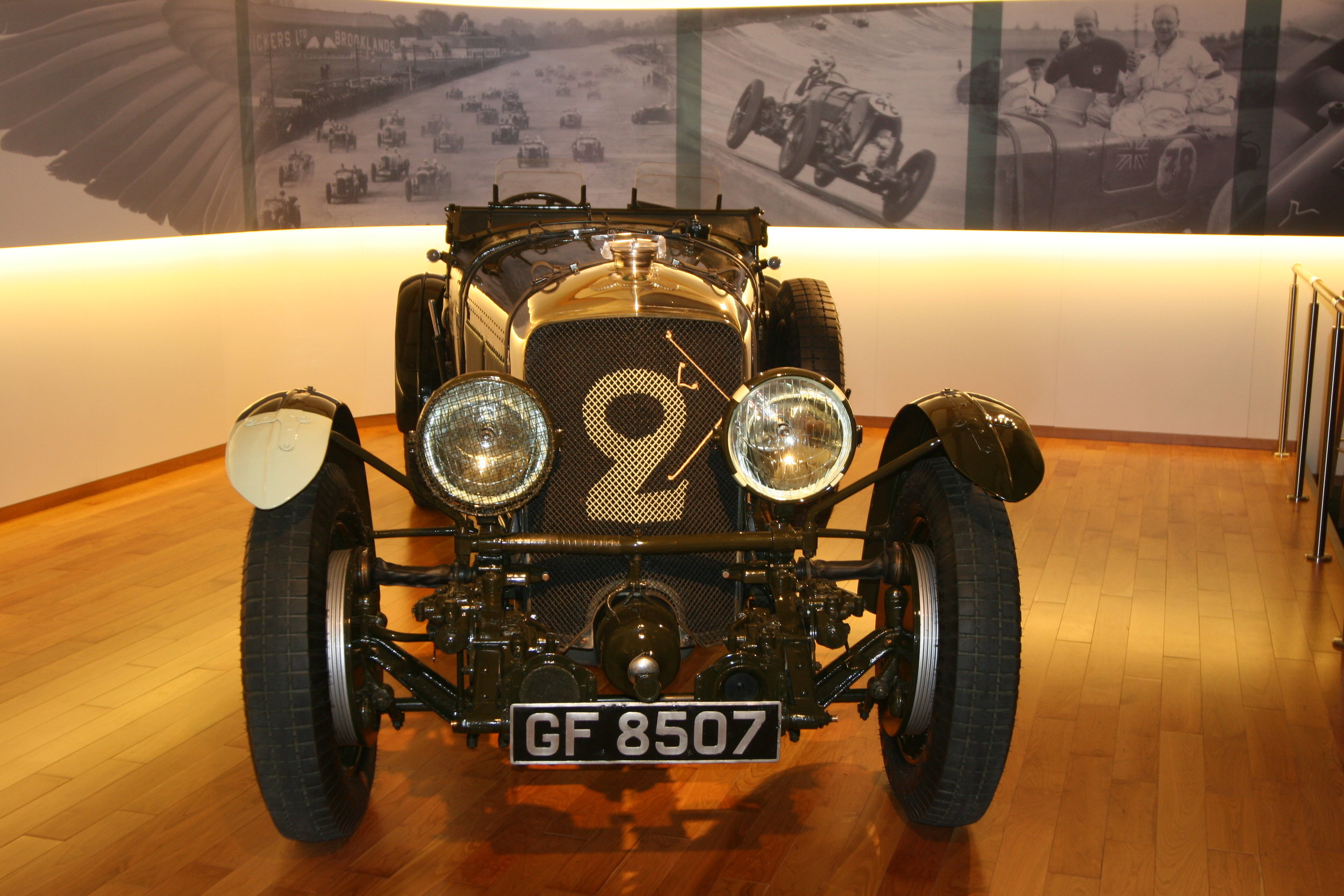Bentley rotary preserved at Crewe. The nine cylinders spun with the propeller..
Aged 30 at the height of Word War 1, WO Bentley was supervising production of his 24.9 litre BR2 rotary aero engine. Already a Lieutenant in the Royal Naval Volunteer Reserve (RNVR), a cadre of civilian volunteers with quick means of promoting wartime officers in the Royal Naval Air Service (RNAS) ,he had been sent to Derby. Rolls-Royce was making air-cooled Renault aero engines and he met Ernest W Hives (later Lord Hives) with whom he formed a twenty year bond. The forthcoming 200hp water-cooled Rolls-Royce Eagle engine was duly equipped with aluminium pistons at WO’s behest. But developing an air-cooled rotary of his own involved visiting active squadrons of what was still the Royal Flying Corps and at tea-time on a forward aerodrome, “… every gun in Flanders seemed to open up on us.” WO found himself in the midst of a strafing attack by Manfred Freiherr von Richthofen’s Jagdstaffel 11, based at Douai, leaping to safety in a nearby canal. Prussian aristocrat von Richthofen died at Vaux-sur-Somme on April 21 1918, probably at the hands of Canadian Captain A Roy Brown in a Sopwith Camel (below). The precise circumstances were uncertain. The Red Baron was chasing a Camel piloted by Captain Brown pursued by another Canadian, Lieutenant Wilford May, when he was shot as he turned to check his tailplane. It was never established whether the bullet was fired by one of his assailants or from the ground. Having fallen on Allied territory, the German was given an appropriate funeral, his pall-bearers captains and squadron commanders matching his rank. WO grudgingly admired the Red Baron’s gallantry. “I almost felt a pang of regret when Roy Brown in a Camel, powered by one of our BR1s, caught him at last.” Yet seeking refuge in the canal had consequences. It was here WO found Petty Officer Clarke, who was to become Bentley Motors’ head racing mechanic. WO had a wide circle of technical experts. At Humber he worked with head designer Frederick Tasker Burgess, “- a draughtsman supreme. We talked the same language, (he) understood and appreciated the same things and (he was) a man in a thousand to have on design work.” After the war WO got in touch with Burgess about ideas for a new car.




